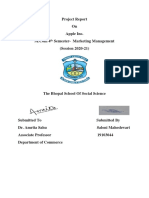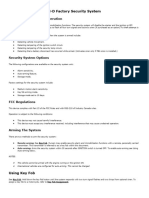0% found this document useful (0 votes)
31 views20 pagesDVA Lab Manual
The document is a lab manual for the Data and Visual Analytics course at SAGAR Institute of Research and Technology, detailing various programming experiments in Python. It includes tasks on descriptive statistics, statistical inference, hypothesis testing, regression modeling, data wrangling, data visualization, and an overview of data ecosystems. Each section provides code examples and expected outputs for practical learning.
Uploaded by
pawanyadav7015Copyright
© © All Rights Reserved
We take content rights seriously. If you suspect this is your content, claim it here.
Available Formats
Download as DOCX, PDF, TXT or read online on Scribd
0% found this document useful (0 votes)
31 views20 pagesDVA Lab Manual
The document is a lab manual for the Data and Visual Analytics course at SAGAR Institute of Research and Technology, detailing various programming experiments in Python. It includes tasks on descriptive statistics, statistical inference, hypothesis testing, regression modeling, data wrangling, data visualization, and an overview of data ecosystems. Each section provides code examples and expected outputs for practical learning.
Uploaded by
pawanyadav7015Copyright
© © All Rights Reserved
We take content rights seriously. If you suspect this is your content, claim it here.
Available Formats
Download as DOCX, PDF, TXT or read online on Scribd
/ 20
























































































